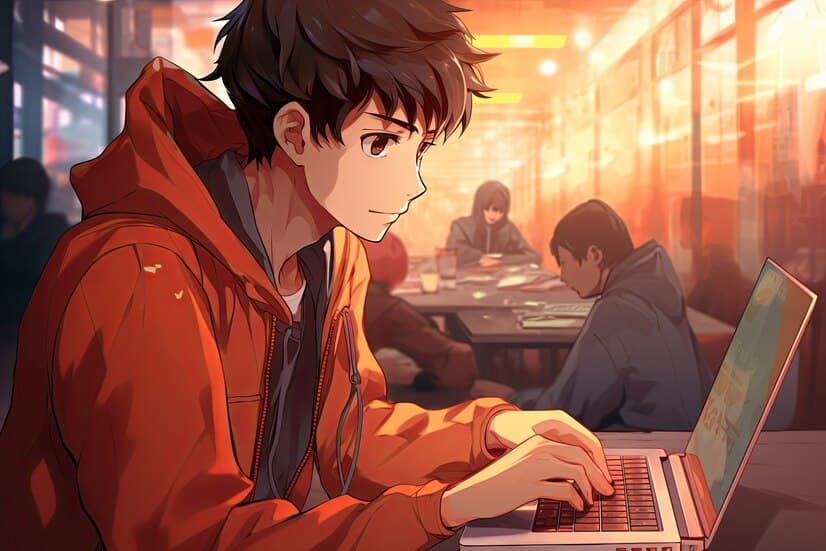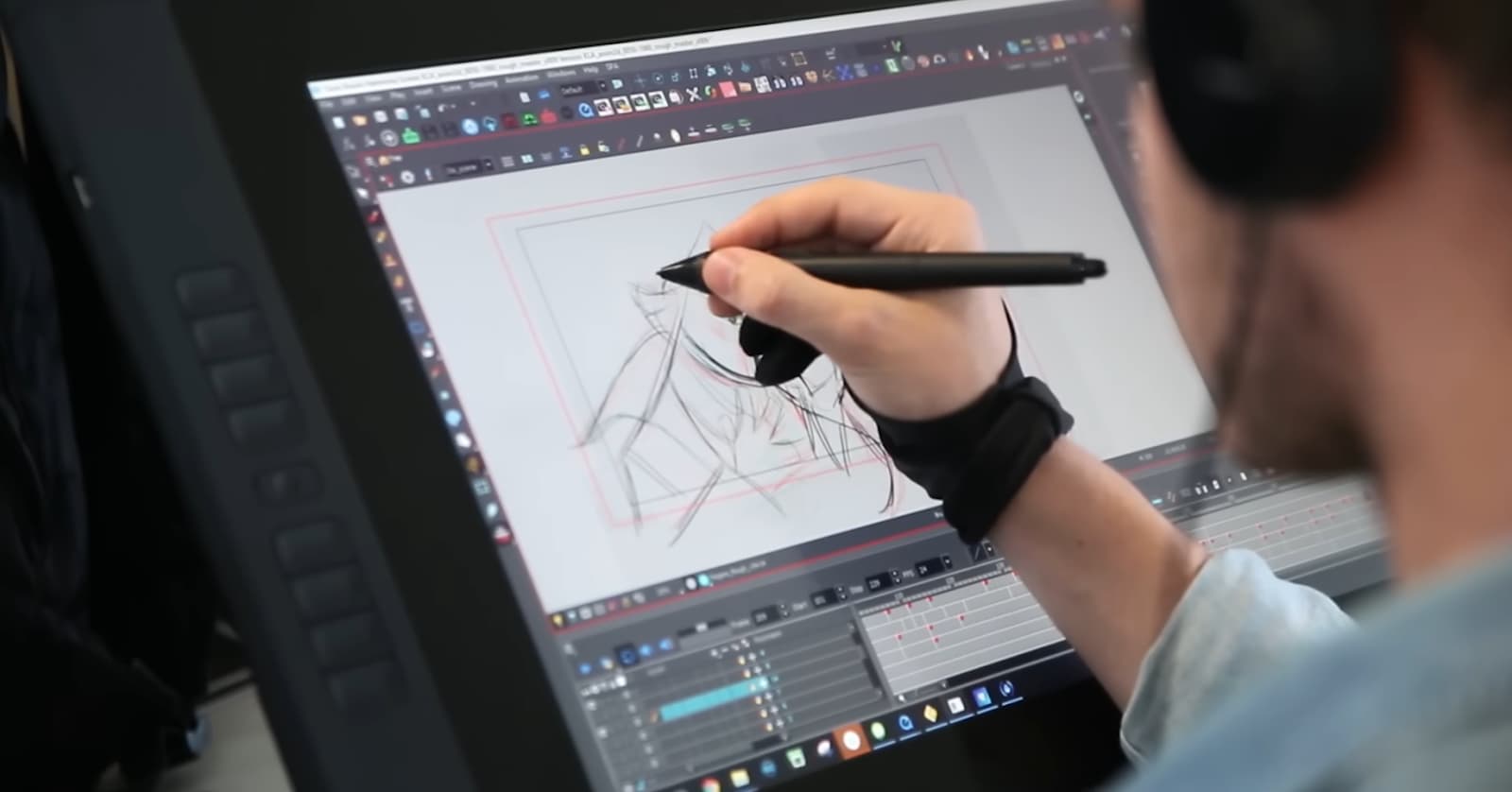Embarking on the captivating exploration of anime animation demands more than just creativity; it necessitates the right set of tools. In the expansive realm of animation software, discovering the perfect match can be a game-changer for animators.
This comprehensive guide not only explores the diverse landscape of anime software but also provides invaluable insights into essential features, tools, and the best software options for both seasoned professionals and aspiring animators.
Anime creation is an intricate art that melds storytelling with mesmerizing visuals, and at its core lies the need for precise tools.
Aspiring animators and seasoned professionals alike navigate through a myriad of software options, each holding the promise of bringing their creative visions to life.
Key Features to Look for in Anime Software
When delving into the enchanting realm of anime animation, certain key features elevate a software’s effectiveness. Explore specialized brushes for replicating traditional manga and anime art styles, robust storyboarding capabilities for efficient scene planning, vector animation for creating smooth and scalable movements, and integrated rigging systems that simplify the complexities of character movement and articulation.
Discover more details about anime softs here
Best Anime Software for Professional Animation: Clip Studio Paint
Renowned for its versatility, Clip Studio Paint stands out as a preferred choice for professional anime artists, especially those engaged in comic and manga creation.
Toon Boom Harmony
As an industry-standard animation software, Toon Boom Harmony impresses with its robust capabilities. Supporting traditional paperless, cut-out, and frame-by-frame animation, it emerges as a comprehensive choice for anime professionals seeking excellence in their craft.
OpenToonz
An open-source gem, OpenToonz provides advanced tools for both traditional and cut-out animation. Its flexibility has earned it a global reputation as a favorite for anime production studios.
TVPaint Animation
Renowned for its traditional frame-by-frame animation approach, TVPaint Animation offers an intuitive interface and feature-rich tools, making it an excellent choice for animators striving for a hand-drawn aesthetic.
Adobe Animate
For those familiar with Adobe products, Adobe Animate offers a seamless transition into anime-style animations. Its vector-based animation tools empower creators to craft dynamic and engaging visual narratives.
Free Anime Software for Aspiring Animators: Pencil2D
Designed with beginners in mind, Pencil2D is a user-friendly, open-source software providing essential drawing and animation tools. It serves as an ideal starting point for those venturing into the world of anime animation.
Synfig Studio
As a feature-rich software for 2D animation, Synfig Studio supports vector-based characters, making it a valuable choice for creating anime-style animations with depth and complexity.
Krita
Primarily recognized as a digital painting software, Krita extends its capabilities to animation. With customizable brushes and an extensive range of color options, Krita is an excellent choice for artists looking to infuse depth into their anime creations.
Blender
As a robust open-source 3D creation suite, Blender encompasses a 2D animation module, providing versatility for animators interested in exploring both 2D and 3D animation within a single software.
Moho (formerly Anime Studio)
Moho distinguishes itself by offering powerful 2D animation tools, featuring bone rigging and vector-based animation. Whether you’re a beginner or a professional, Moho provides a platform for creating captivating anime sequences.
CrazyTalk Animator
Focusing on character animation, CrazyTalk Animator empowers users to breathe life into characters through facial animation and preset motions. Its user-friendly interface makes it an appealing choice for animators emphasizing character expression in anime projects.
Reallusion Cartoon Animator
A versatile software catering to 2D character animation, Reallusion Cartoon Animator equips animators with features like facial puppeteering and scene creation. It’s a suitable choice for crafting dynamic and expressive anime narratives.
Opentoonz Morevna Edition
An enhanced version of the open-source animation software Opentoonz, the Morevna Edition specifically addresses the needs of anime creators. It introduces additional features and improvements, tailoring the anime animation experience to a more specialized level.
Current Trends in Anime Animation
Anime creators are progressively incorporating 3D elements into their animations, enriching traditional 2D styles with enhanced depth and visual richness.
Collaborative Platforms
The industry is witnessing a surge in collaborative platforms, allowing animators to work together in real-time. This fosters creativity and efficiency in anime production, reflecting the evolving nature of collaborative workflows.
Global Collaborations
Anime studios are actively engaging in international collaborations, infusing diverse cultural influences into anime storytelling. This trend expands the global reach of the genre, creating narratives that resonate with audiences worldwide.
Diving into the Virtual Realm with VR Experiences
As technology advances, the anime industry anticipates a paradigm shift with the integration of Virtual Reality (VR) experiences. Platforms such as Oculus Studios and SteamVR provide creators with the tools to craft immersive VR anime experiences.
This technology allows viewers to step into the heart of anime worlds, blurring the lines between fiction and reality. VR opens up new avenues for storytelling, providing an interactive and engaging narrative experience for anime enthusiasts.
Anticipating Cross-Platform Accessibility
The trajectory of anime software is intricately tied to its ability to seamlessly adapt to various platforms. Software like Moho, known for its cross-platform compatibility, enables animators to work effortlessly on both Windows and macOS. This adaptability not only broadens the reach of anime creations but also aligns with the diverse ways audiences engage with animated content, ensuring a global audience for anime enthusiasts and creators alike.
The Rise of Indie Animation Studios
While major studios continue to dominate the anime industry, there’s a notable surge in independent or indie animation studios. Advancements in technology have empowered individual animators and small teams to create high-quality content, often with distinctive storytelling and visual styles.
Accessibility of Animation Tools
The availability of user-friendly animation software and online platforms for content distribution has democratized the creation of anime. Independent creators can now compete on a global scale, bringing fresh perspectives and innovative narratives to the forefront.
Crowdfunding for Anime Projects
Crowdfunding platforms play a significant role in supporting independent anime projects. Creators can directly connect with their audience, secure funding for their ventures, and maintain creative control over their work. This trend fosters diversity and creativity outside the conventional studio system.
Conclusion
It’s evident that anime animation is a dynamic and ever-evolving field. The synergy between traditional craftsmanship and technological innovation continues to shape the landscape, offering new possibilities for creators and audiences alike.
Whether you are drawn to the polished productions of established studios or the experimental charm of indie creations, the world of anime animation invites exploration and celebrates the fusion of artistry and technology.



